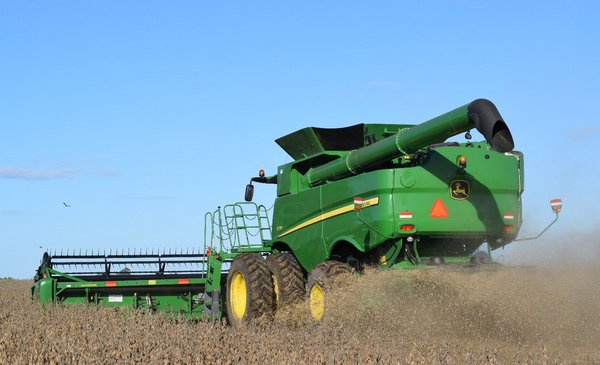The Uruguayan economy grew again in the second quarter of 2022according to the National Accounts report released this Friday by the Central Bank of Uruguay (BCU).
The Gross Domestic Product (GDP) grew 1.1% compared to the immediately previous quarter (January-March), that is, in seasonally adjusted terms.
Meanwhile, in the year-on-year measurement, economic activity expanded 7.7% compared to the April-June period of last year “mainly due to the high yields achieved in the soybean harvest that began to be exported during the quarter and to the normalization of sanitary conditions in the country, with an important incidence of education services”, according to the BCU.
The expense of consumption final increased 6.1% year-on-year in the second quarter, with an increase in both household spending (5.6%) and government spending (8%). In the first case, the positive impact of consumer spending during tourist trips abroad, mainly to Argentina, as well as the consumption of passenger transport and education services, the BCU explained.
For its part, the gross fixed capital formation (investment) expanded 3.9% year-on-year. This responds to increases in both construction works and investment in machinery and equipment.
Meanwhile, the exports of goods and services grew 16.3% in year-on-year terms and had a positive impact of 4.7 points. Higher placements of soybeans, beef, motor vehicles and cellulose stand out, offset in part by a decrease in exports of forest products. Exports of services also grew, associated with the growth of receptive tourism.
Exports of other professional, technical and business services, and information and communication technology services also increased. Meanwhile, imports did 9.7%.
By sectors of activity
In the first quarter, growth was observed in most sectors, and the activities of health, education, real estate activities and other services, and agriculture, fishing and mining stand out for their incidence.
BCU
The sector agricultural grew 17.2% with an increase that is mainly explained by the good performance of agricultural and forestry activities. In particular, a larger soybean harvest stands out compared to the previous harvest.
For its part, the manufacturing industry grew 2.1% with a positive impact on pulp production, which had a lower performance in the second quarter of 2021 due to the closure for maintenance of some of the plants, and also of the oil refinery.
Meanwhile, the trade and accommodation activities grew 6.1%. Here, the increase in wholesale and retail trade services linked to soybean exports, fuel sales, footwear and clothing stands out. There was also an improvement in the activity of hotels and restaurants due to greater demand for non-resident tourists hand in hand with the reopening of borders.
The building had a variation of 4.9% compared to the second quarter of 2021. This result is made up of the growth in buildings (residential homes and to a lesser extent the third pulp mill) as well as in other constructions such as the Central Railway and greater investment in works roads and lines of communication.
The transportation and communications expanded 9.5%, education and health 11.1%, financial services 54%, and professional and leasing activities 8.2%. In addition, the electricity, gas and water sector increased 11.2%







